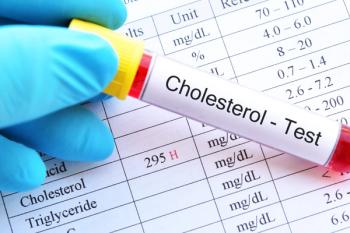
Hepatitis C Antigen Testing Could Simplify, Improve Treatment
Automated HCV antigen testing has a much faster turnaround time and lower costs.
Serologic detection of hepatitis C virus antigen (HCV-Ag) could replace the previous detection standard of molecular HCV-RNA in the era of direct-acting antivirals (DAAs), as DAA effectiveness in treating HCV is not predicted by baseline HCV-RNA levels, and successful treatment is no longer marked by absence of residual HCV-RNA.
"To simplify treatment monitoring, hepatitis C core antigen is emerging as a new tool for diagnosis and treatment monitoring in chronic HCV infection,” wrote principle investigator Pietro Andreone, MD, Department of Medical and Surgical Sciences, University of Bologna, Bologna Italy, and colleagues.
Andreone, and lead author Elisabetta Loggi, PhD, currently at the UOC Patologica Clinica, Fermo, Italy, elaborated on the advantages of applying the serologic testing of HCV-Ag in a statement to MD Magazine.
"Certainly, the main advantage is the general workflow simplification: the automated HCV-Ag testing doesn't require sophisticated laboratory facilities, specialized technicians, has a much faster turnaround time and lower costs," Andreone and Loggi said.
Although the HCV-Ag testing has a lower level of sensitivity than HCV-RNA detection, Andreone and Loggi posed the question of whether there is still a need for virological testing with high sensitivity in the DAA era.
The change to DAA treatment from pegylated interferon-based protocols has obviated the need for baseline levels of RNA in order to categorize the patient or to tailor therapy. Also, successful treatment is no longer marked by an absence of HCV-RNA, but by sustained virologic response (SVR). In addition, there is no longer a "futility/stop treatment" measure from HCV-RNA that is used with DAA regimens.
"A residual viremia during the treatment is currently disregarded, as it does not imply a modification of treatment schedule,” Andreone and Loggi said.
To ascertain the clinical utility of the less costly and more accessible HCV-Ag detection method for monitoring treatment response compared to HCV-RNA, the investigators obtained both values periodically through DAA treatment of 96 consecutive, all-genotype patients with chronic HCV infection presenting to University of Bologna associated outpatient clinics between June 2013 and December 2015.
The investigators found expected patterns. There was a very rapid decrease in HCV-RNA, with negative detection increasing from mean of 16% after 2 weeks, to 55% after 4 weeks, and 99% after 8 weeks of treatment. The kinetics of HCV-Ag was expectedly different, with 63% negative after 2 weeks and then a slower progression during treatment to 74% after 4 weeks and 83% after 8 weeks.
At the end of treatment, however, all patients except 1 with breakthrough viremia were negative for both HCV-RNA and HCV-Ag.
"Our recent work, in agreement with other similar experiences, showed a general clinical equivalence between HCV-Ag and HCV-RNA monitoring," Andreone and Loggi said. "Both present a similar kinetic disappearance from serum during DAA treatment, despite the lower sensitivity of HCV-Ag, which does not seem to limit the performance of the test."
The researchers opined that HCV-Ag is a strong candidate for simplified, cost-saving virological testing for HCV, and should be implemented “both as index of viral replication and to assess the response to pharmacological treatment.”
The study, "
This article was originally published by
Newsletter
Stay informed on drug updates, treatment guidelines, and pharmacy practice trends—subscribe to Pharmacy Times for weekly clinical insights.


















































































































































































































